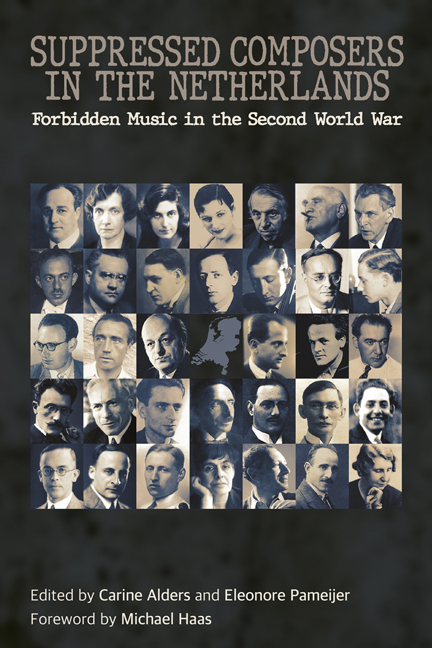15 - Dick Kattenburg
Published online by Cambridge University Press: 09 May 2024
Summary
Dick Kattenburg was prodigiously talented. It was obvious even in his early days that he would enjoy a flourishing career as a violinist for years to come. Even today, some 75 years later, his appealing music immediately touches the heart. A large part of his output was created during his period in hiding. He was murdered at the age of 24. Thanks to his romance with a young flautist, his manuscripts were preserved and have found an audience all these years later.
Kattenburg was born in Amsterdam on 11 November 1919, the second child of Louis and Heleen Kattenburg. He had an older sister, Daisy; their brother Tom was born in 1922. Great-grandfather Levie and his ten sons had laid the foundations for a textile empire that would be successful for future generations. Dick's father was employed by the Hollandia-Kattenburg factory owned by his cousin Jacques, and he was the supervisor in a second family business. The young affluent family moved from the big city to Bussum, a town not far from Amsterdam. Dick was a normal boy: he won a prize in a colouring competition, sent a story about his dog Bobbie to the local newspaper and went to high school in Bussum. He was an ordinary child with an unusual musical talent.
The composer Hugo Godron, Kattenburg's teacher at the music school in Bussum, gave him his first violin lessons and mentored him in his early steps as a composer. There is a Valse d’amour, which, in a child's handwriting, is clearly one of his earliest works. The first pieces with opus numbers, an Andante for string quartet and two Hebrew songs, seem to have been lost. After high school, Kattenburg probably enrolled at the Collège Musical Belge, a private music school in Antwerp. At the age of seventeen he obtained his music theory and violin diplomas. Tap Dance, a piece for four-handed piano and tap dancer, dates from this time.
With a degree and his first adult compositions completed, the young composer returned to the Netherlands. The address of his brother Tom, Bloemgracht, Amsterdam, is noted in the margin of a music manuscript. Kattenburg, no doubt, was often in his home-town. He met Ima van Esso, who studied flute at the Amsterdam Music Lyceum. She also came from a well-to-do Jewish family.
- Type
- Chapter
- Information
- Suppressed Composers in the NetherlandsForbidden Music in the Second World War, pp. 151 - 158Publisher: Boydell & BrewerPrint publication year: 2024



